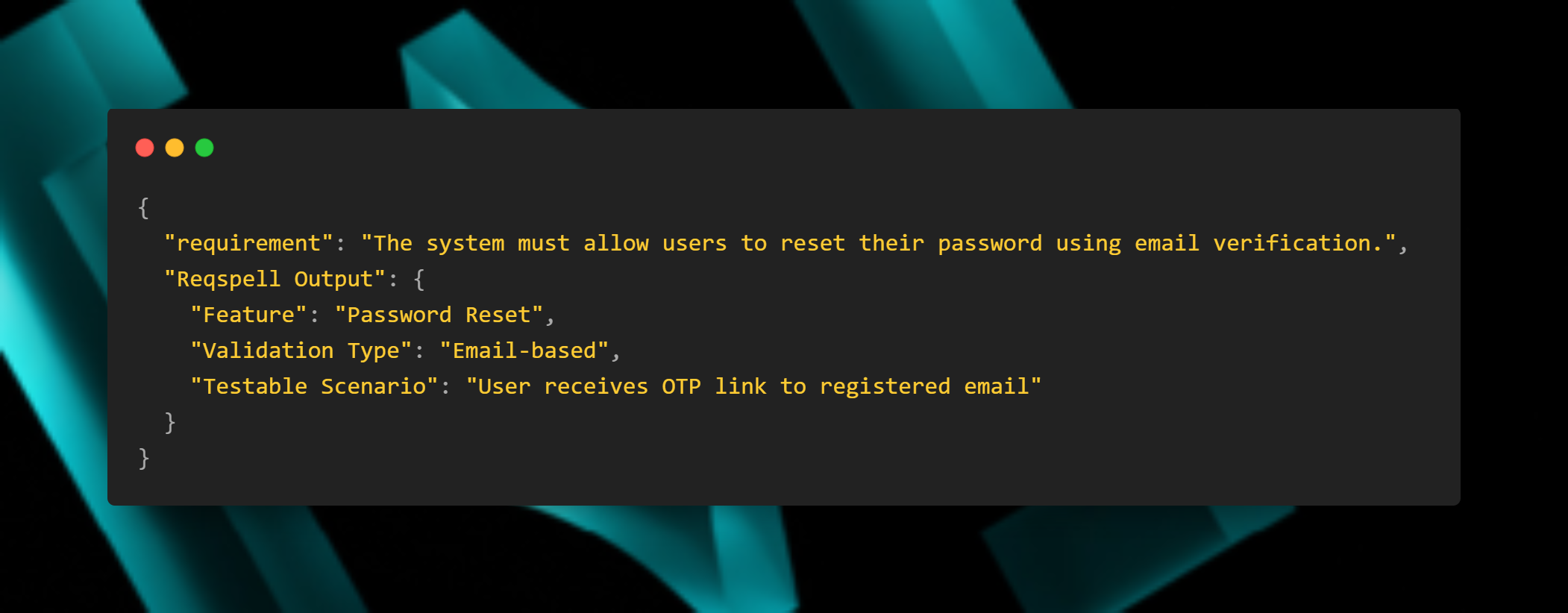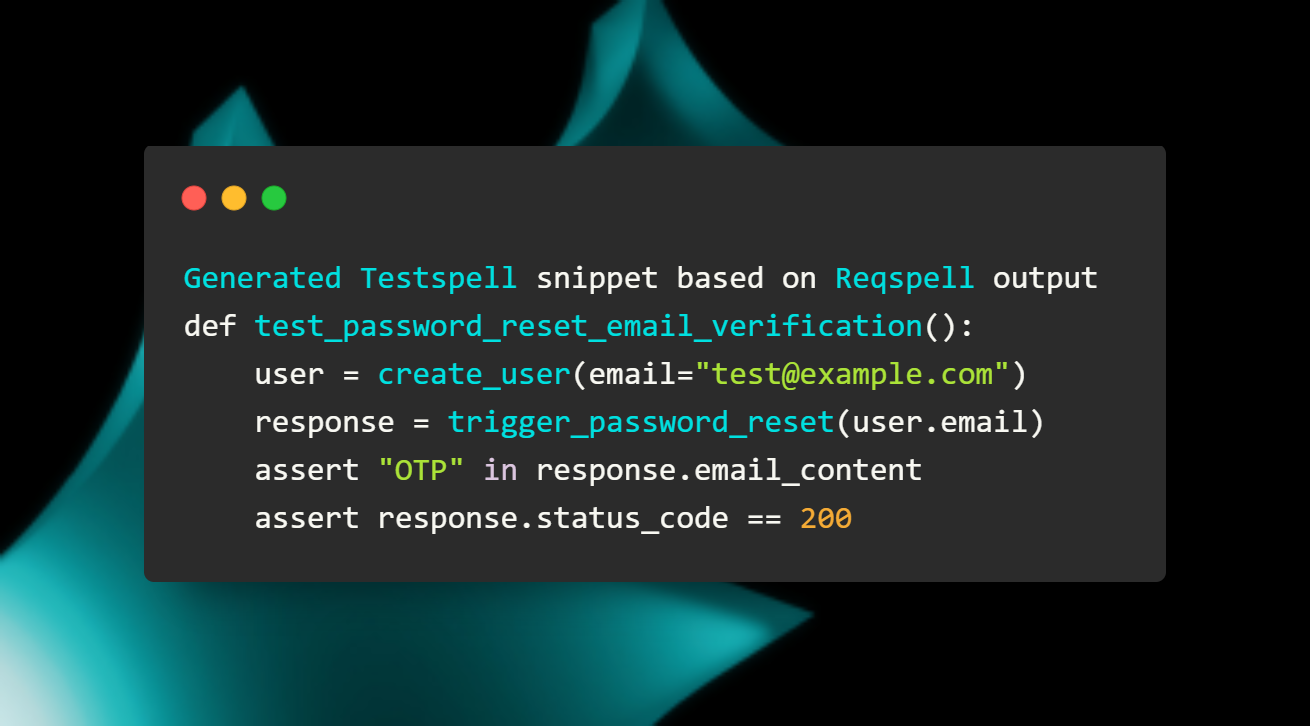December 1, 2025
Introduction
Software delivery today demands both speed and precision. Yet, traditional SDLC processes remain fragmented - requirements are siloed, testing is reactive, and cross-team visibility is limited. The result? Slow releases, inconsistent quality, and mounting technical debt.
Reqspell and Testspell, part of the Codespell.ai ecosystem, bridge this gap through AI-powered end-to-end intelligence. Together, they transform how teams capture requirements, generate tests, and validate releases - connecting every phase of the SDLC with automation and insight.
1. The Modern SDLC Bottleneck
Most enterprises still rely on disconnected tools for requirements, coding, and testing. This leads to three persistent issues:
- Ambiguity in requirements, causing rework and scope creep.
- Manual test scripting, slowing down QA velocity.
- Limited traceability, making it hard to assess change impact.
Without automation and intelligence, teams spend more time managing workflows than delivering value.
2. Reqspell: Intelligent Reverse Engineering
From Documentation to Dynamic Context
Reqspell replaces static requirement documentation with AI-structured artifacts that are testable, traceable, and adaptable. It understands context, captures dependencies, and builds the foundation for continuous validation.
Key Capabilities
- AI-based Parsing: Converts human-readable requirements into structured, testable components.
- Traceability Graph: Connects requirements to design artifacts, code modules, and test cases.
- Change Propagation Alerts: Detects downstream dependencies when a requirement changes.
Example:

Reqspell ensures that requirements evolve intelligently - automatically aligning with the design and test layers.
3. Testspell: AI-Driven Testing Automation
Testspell takes Reqspell’s structured requirements and transforms them into automated, executable tests across layers - API, UI, and integration.
Key Capabilities
- Automated Test Case Generation: Derives test scripts directly from structured requirements.
- Continuous Validation: Keeps tests aligned with evolving requirements.
- Multi-Layer Coverage: Generates test suites across different tech stacks.
Code Example:

This drastically reduces test authoring time and ensures coverage continuity through automation.
4. Traceability and Coverage Intelligence
Reqspell and Testspell bring complete end-to-end traceability across requirements, test cases, and code commits. Every requirement automatically maps to a test artifact and validation cycle, creating a transparent audit trail throughout the SDLC. This deep linkage ensures not just visibility but verifiable accountability—allowing QA leaders and compliance teams to track coverage gaps, validate regulatory adherence, and maintain a continuous record of delivery quality across releases.
CLI Example:

This seamless integration allows developers to embed Reqspell and Testspell within their existing CI/CD toolchains — without disrupting workflows.
5. How Reqspell + Testspell Deliver End-to-End Intelligence
Together, Reqspell and Testspell create a unified automation fabric that spans the entire SDLC:
This synergy enforces shift-left validation, reduces handoff friction, and ensures faster, error-free releases.
6. End-to-End Workflow Automation
Reqspell and Testspell operate as part of a connected delivery ecosystem, ensuring no handoff friction between requirements, development, and testing. Once a requirement is logged, Reqspell triggers downstream workflows—auto-generating user stories, test scenarios, and validation parameters. Testspell then orchestrates automated execution within CI/CD environments, feeding real-time results back to issue trackers. The result is an uninterrupted, AI-driven SDLC pipeline that minimizes manual dependencies and delivers release-ready confidence at speed.
7. Governance, Security, and Compliance
For enterprise environments, Reqspell and Testspell maintain:
- Role-based access control (RBAC)
- End-to-end audit trails for all requirement and test modifications
- SOC 2 and GDPR-aligned frameworks
This ensures full transparency and compliance without slowing delivery.
8. Real-World Enterprise Impact
A global financial enterprise implemented Reqspell and Testspell to modernize their SDLC.
Outcome: 40% reduction in test effort, 30% faster time-to-release, and measurable quality uplift across all delivery streams.
9. Use Case: Fintech Application Onboarding
A fintech firm used Reqspell to structure complex KYC and authentication flows. Testspell then generated API and UI test suites for validation.
Each regulatory change automatically updated both requirements and tests — reducing manual intervention and audit risk.
10. Future Outlook: Autonomous SDLC Pipelines
The future of software delivery lies in self-governing, autonomous pipelines where intelligence drives execution, not just assists it. Reqspell and Testspell are foundational components of this evolution—laying the groundwork for AI-driven SDLC environments capable of self-orchestration, adaptive testing, and continuous optimization.
Codespell’s roadmap is aligned with this vision—advancing toward fully autonomous delivery ecosystems where human oversight shifts from operational control to strategic supervision. The outcome will be a next-generation SDLC that is faster, more resilient, and inherently intelligent—transforming software delivery into a continuously learning and self-optimizing process.
Conclusion
The era of disconnected SDLC tools is over.
Reqspell and Testspell bring unified, intelligent automation that accelerates delivery, ensures consistency, and enhances quality.
From developers to decision-makers, these tools empower teams to:
- Build with confidence
- Test with intelligence
- Deliver with speed


.png)







.png)